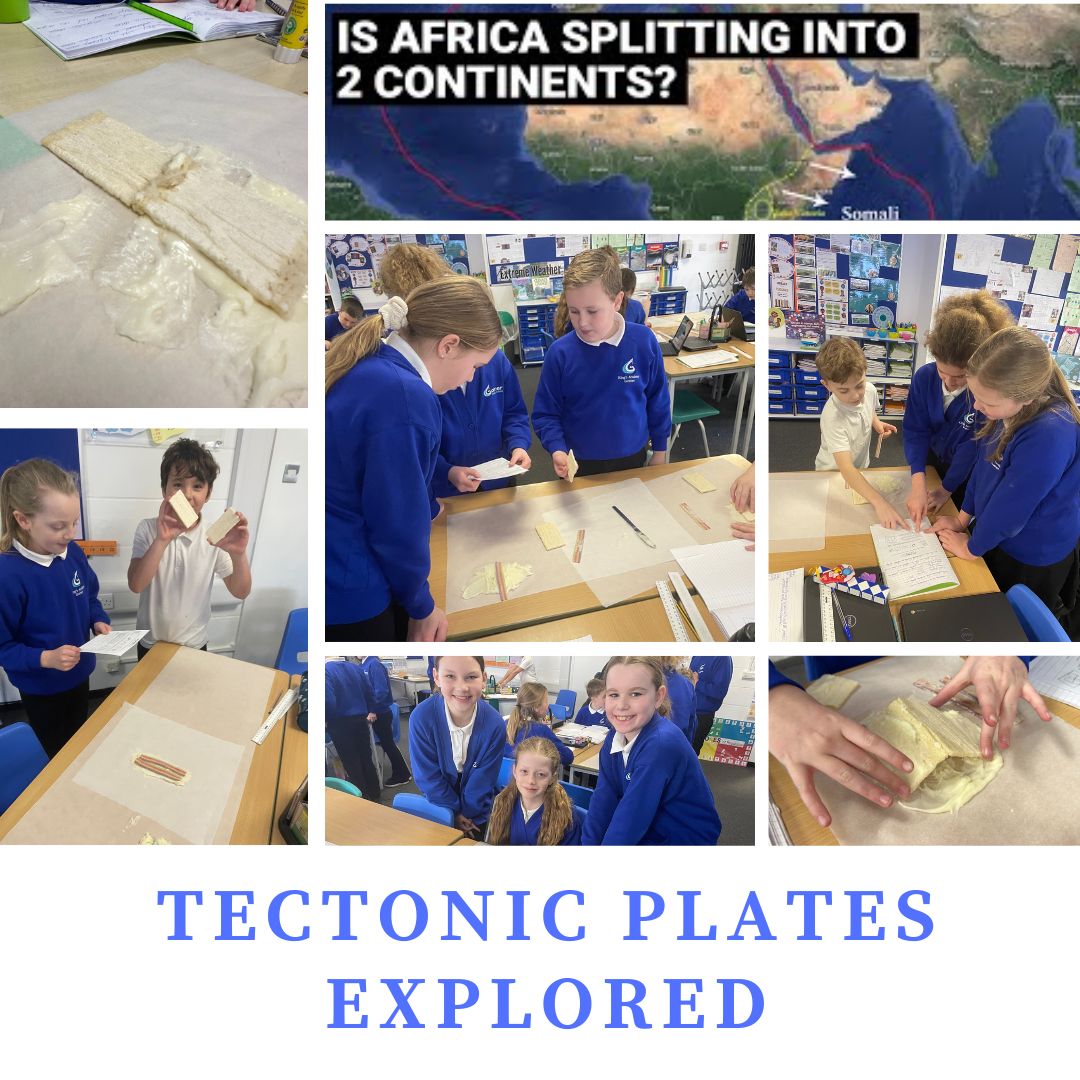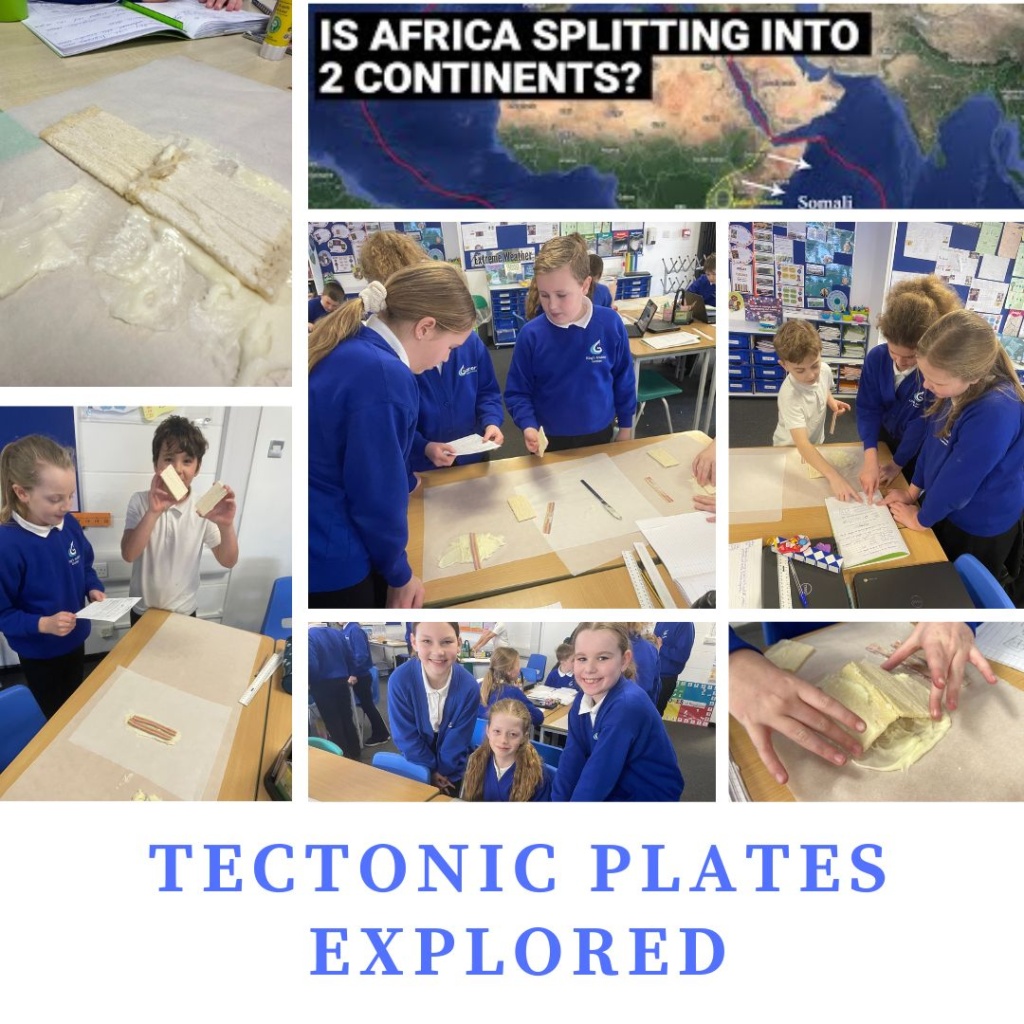
As part of their Geography learning, Year 6 have been investigating tectonic plates and their role in shaping our planet. They began by reflecting on their existing knowledge from this term’s studies on extreme weather and natural disasters. Many students recognised that tectonic plates are linked to the Earth’s surface and can cause earthquakes – but there was so much more to discover! Building on this understanding, the children explored the work of Alfred Wegener and his theory of continental drift, as well as how geologists later proved the existence of plate tectonics. They were fascinated to learn that this process is happening right now in Africa, where the African plate is gradually pulling away from the Somali plate. This slow but powerful movement, taking place over millions of years, will eventually lead to the formation of a brand-new ocean! But how does this happen? That was the big question for the afternoon. To bring their learning to life, the children took part in a hands-on activity using crackers, frosting, and fruit sweets to model the movement of tectonic plates. They explored the four main types of plate boundaries:
- Divergent – plates move apart, forming new oceans.
- Convergent – plates push together, sometimes forcing one beneath the other.
- Collision – plates crash into each other, creating towering mountain ranges.
- Transform – plates slide past one another, causing earthquakes, like along the San Andreas Fault.
This engaging session helped Year 6 deepen their understanding of the incredible forces at work beneath our feet. Who knew that something as simple as crackers and frosting could reveal so much about our ever-changing planet?
